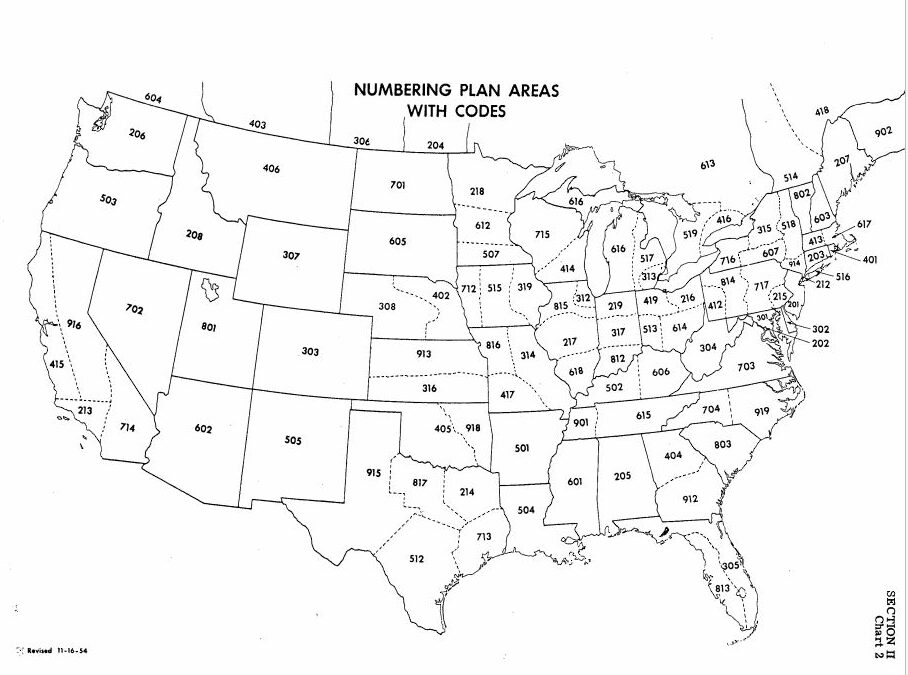Recently I took myself to task for repeating a story that was too good to check – that the original area codes were assigned by population to minimize time spent on the network dialing. Here’s the story, if you missed it.
But maybe I wasn’t so wrong, after all – although I still lose points for never double-checking the story.
Clarke Kidder of Contoocook, a retired telephone company engineer (“I have been in a position to see the network transition from magneto to IP, open wire to fiber”) and director of administration for the industry group Telephone Association of New England, reached out to me following that article. He says population was certainly part of the reason that, for example, New York City got area code 212 (just 5 “clicks” on a rotary dial) while New Hampshire got 603 (19 clicks), even if it wasn’t the only one.
“There was some discussion – I haven’t found where there was specifically some discussion, but it had to have played a factor,” he said. “It all had to do with the growth of the network. It’s possible that the Bell Labs people looked at population based by density of phones, not necessarily density of people.”
The transition from regional phone networks, often connected manually by operators, to a nationwide dialing network wasn’t easy – Kidder says it was still happening in places in the mid-1960’s. Various technical and organizational factors were involved at a time when virtually all switches were electro-mechancial: “A lot of reason that got buried in the way the network had to be designed.”
The issue of how much population factored into the assignment of the original 86 area codes in 1947 has shown up on the Talk page attached to the wikipedia article North American Numbering System. You can follow the debate here – scroll down to the section headed “Details on the scheme for assigning numbers to areas?”


 Return to the Concord Monitor
Return to the Concord Monitor